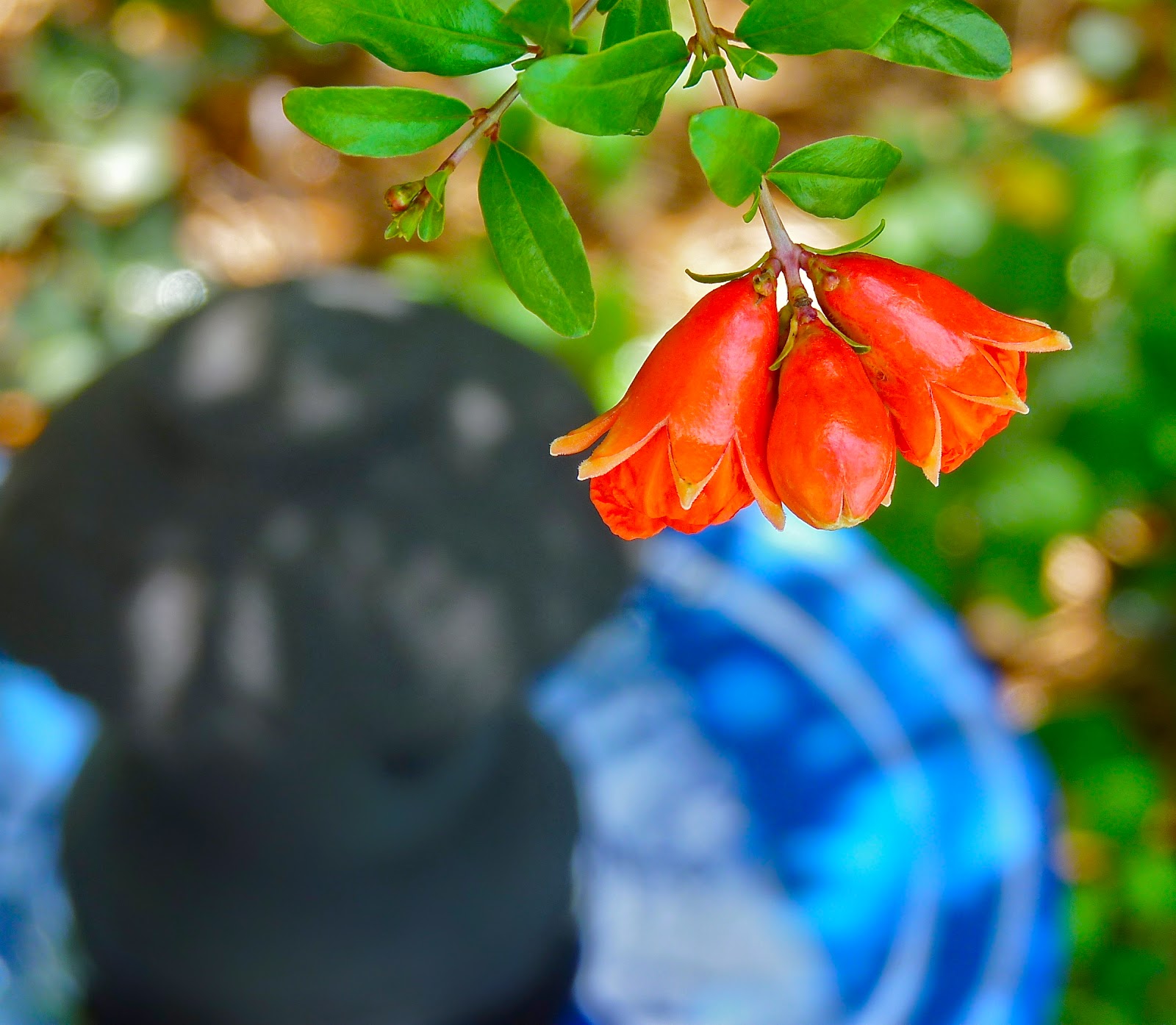Cottage gardens are more old fashioned in appearance, and represent samplers of scattered plantings. When in full bloom they are spectacular. Naturally, I've complicated matters here by using lots of passalongs in concert with mostly native perennial plants. As opposed to an abundance of seasonally coordinated annuals, a problem with perennials in the cottage garden (if you can call it that) is they rarely all bloom at the same time.
As a matter of fact, native perennials (and reseeding annuals) have evolved to fill a particular niche timewise as well as microclimate wise. I suppose if they did all bloom together they'd be competing for pollinators and competition dodged is competition won when it comes to surviving in the Texas countryside. I respect that.
Regardless, occasionally when I squint and angle the camera just so, I catch a shot that captures as close to a cottage garden look as my beds usually provide. No pull out all the stops, everything in bloom at one time showstoppers here, but more typically two things in bloom together. Like so.
And so:
Like this:
Or this:
And here, my current favorite, which appeals to me more as a matter of focus than variety but who cares, because look: Profusion, suggested.
And to wrap things up today, a glimpse not at flowers but at two foliage plants I love, which also represent where I can get into my own particular version of garden troubles.
This little beauty is Mimosa pudica, or sensitive plant. The leaves fold up as a protective measure at the slightest touch. The novelty of that aside, I love the way it looks and the fact it creeps along just above ground level, quietly providing a gorgeous green backdrop underneath other showier plants.
And how could this be a problem? Mimosa pudica is categorized as an invasive plant. By all rights I should be removing this everywhere I find it. But I don't. I just can't make myself take it out. This plant might go haywire in other parts of the country but in my garden there are two or three smallish specimens that come back each spring. They don't seem to be spreading though I kind of wish they would. So I resolve to keep an eye on them and promise myself if they show any signs of taking over I'll yank them right out.
And speaking of yanking something right out. See this? You might recognize this native,
by the characteristic white underside of the leaf. Vitis mustangesis, or Mustang grape. My mother-in-law made amazing mustang grape jelly every year and so I was excited when I first realized we had some growing in our own back yard. But while hers was neatly trained and trellised on a split rail garden fence constructed by my father in law, ours is bird sown and grows like this:
Which would be fine if it stayed on the ground, but these vines grow at a phenomenal rate and would much rather ninja-kudzu themselves up into and over every shrub, bush and tree. Honestly, as I stood in the midst of it to snap this photo I was alarmed at what felt like a tendril experimentally wrapping itself around my ankle.
I'm determined to find some way to tame these vines in our spaces as my in laws did, so eventually we might get as much a chance at the grapes as the birds and squirrels do. Even if we never got a single jar of grape jam, I am a total sucker for these leaves. I think they are gorgeous, green side up or white side under. And while I dither about as to how best to tame them, season after season they get away from me and up into our trees, where they compete vigorously for sunlight and often shade out entire sections of the smaller trees. When it comes to the question of who's in charge around here, I'm afraid the answer in this case is, The Vines!






















































